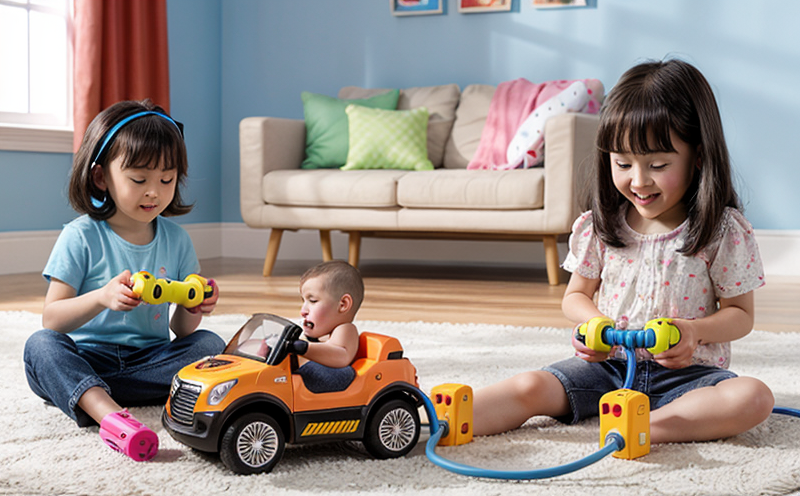ISO 8124-4 Input Power and Current Safety Test
The ISO 8124 series of standards is widely recognized as a comprehensive set of guidelines designed to ensure the safety of toys. The specific test we are focusing on here, ISO 8124-4: Electrical and Other Related Essential Requirements for Toy Safety - Part 4: Input Power and Current, addresses critical aspects related to electrical power inputs and current flow in toy products.
This standard is particularly crucial given the increasing number of battery-operated toys that are now part of children's playtime. The test assesses whether a toy complies with essential safety requirements regarding input power and current, ensuring that it does not pose risks such as electric shock or fire hazards due to improper electrical inputs.
The testing procedure involves connecting the toy to an appropriate AC or DC power source under specified conditions. Key parameters include measuring the actual voltage, current, and power consumption of the toy during operation. Compliance with this part of ISO 8124-4 ensures that toys are safe for use by children, minimizing potential risks associated with electrical faults.
For quality managers and compliance officers in toy manufacturing companies, this test is essential to maintain product safety standards. It also plays a vital role in the R&D process, helping engineers design safer products. Additionally, procurement teams can leverage this testing to ensure that suppliers adhere to international safety regulations.
The importance of ISO 8124-4 cannot be overstated. Toys are not just playthings; they represent an integral part of a child's development and learning experience. Ensuring their safety through rigorous testing is paramount, especially as technology advances and new types of toys enter the market.
Why It Matters
The ISO 8124-4 test is essential for several reasons:
- Consumer Trust: Compliance with this standard builds trust among consumers, ensuring that they can purchase toys without fear of electrical hazards.
- Legal Compliance: Many countries have laws mandating compliance with international standards like ISO. Non-compliance can lead to legal issues and product recalls.
- User Safety: By testing for input power and current, the standard helps prevent accidents such as electric shocks or fires caused by improper electrical inputs.
The test ensures that toys meet essential safety requirements, thereby protecting children from potential harm. This is particularly important given the variety of electronic components found in modern toys, which can introduce additional risks if not properly managed.
Additionally, compliance with this standard helps toy manufacturers stay ahead of regulatory changes and consumer expectations. It also enhances the reputation of the company, showing a commitment to product safety and quality.
Benefits
- Enhanced Safety: Ensures that toys do not pose electrical hazards due to improper power inputs.
- Legal Protection: Compliance with ISO standards can help avoid legal issues and product recalls.
- Consumer Confidence: Builds trust among consumers, leading to increased sales and brand loyalty.
- Regulatory Compliance: Helps toy manufacturers meet international safety regulations.
The benefits extend beyond the manufacturer to include parents who can rest assured that their children's toys are safe. This is particularly important for battery-operated toys, which have a higher risk of electrical faults if not properly designed and tested.
Environmental and Sustainability Contributions
The ISO 8124-4 test contributes to environmental sustainability in several ways:
Energy Efficiency: By ensuring that toys are efficient in their use of input power, the standard helps reduce energy consumption. This is particularly important given the increasing demand for sustainable practices and the need to minimize carbon footprints.
Resource Conservation: Efficient toy design can lead to longer product lifecycles, reducing waste and conserving resources. This aligns with broader sustainability goals of manufacturers who are increasingly focusing on eco-friendly products.
Consumer Education: Compliance with ISO standards encourages consumers to choose safer toys, which in turn promotes responsible purchasing habits that support sustainable practices.





